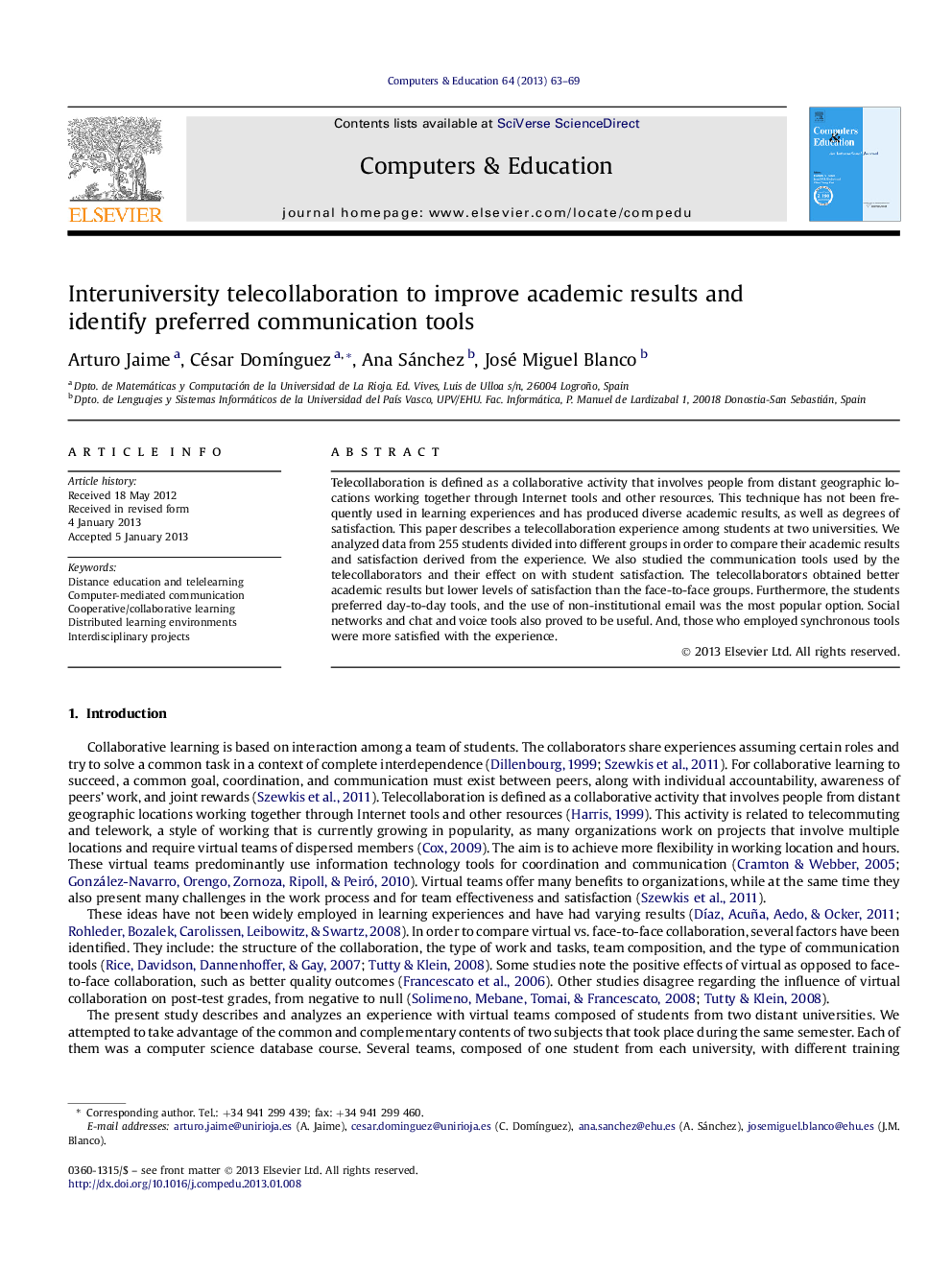| Article ID | Journal | Published Year | Pages | File Type |
|---|---|---|---|---|
| 348588 | Computers & Education | 2013 | 7 Pages |
Telecollaboration is defined as a collaborative activity that involves people from distant geographic locations working together through Internet tools and other resources. This technique has not been frequently used in learning experiences and has produced diverse academic results, as well as degrees of satisfaction. This paper describes a telecollaboration experience among students at two universities. We analyzed data from 255 students divided into different groups in order to compare their academic results and satisfaction derived from the experience. We also studied the communication tools used by the telecollaborators and their effect on with student satisfaction. The telecollaborators obtained better academic results but lower levels of satisfaction than the face-to-face groups. Furthermore, the students preferred day-to-day tools, and the use of non-institutional email was the most popular option. Social networks and chat and voice tools also proved to be useful. And, those who employed synchronous tools were more satisfied with the experience.
► Description of a telecollaboration experience among students from two distant universities. ► Comparison of telecollaborators and face-to-face pairs. ► Telecollaborators obtained better academic results but lower levels of satisfaction. ► Non-institutional email, social networks and chat and voice tools were preferred. ► Students who used synchronous tools were more satisfied with the experience.
